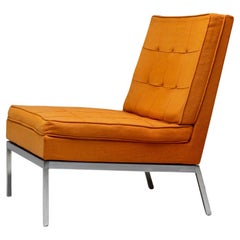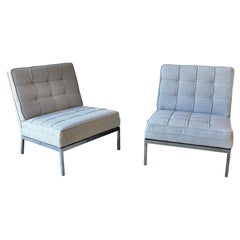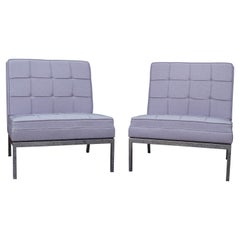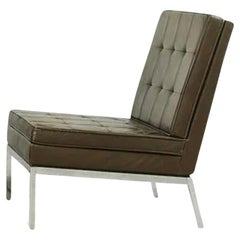Knoll Model 65
Vintage 1950s American Mid-Century Modern Lounge Chairs
Chrome
Vintage 1970s Lounge Chairs
Steel, Chrome
Recent Sales
Vintage 1960s American Mid-Century Modern Lounge Chairs
Chrome
Vintage 1960s American Mid-Century Modern Lounge Chairs
Chrome
Vintage 1970s American Modern Lounge Chairs
Chrome
Vintage 1960s American Mid-Century Modern Lounge Chairs
Steel, Chrome
Vintage 1960s Italian Sofas
Stainless Steel
Mid-20th Century Lounge Chairs
Chrome
Mid-20th Century Lounge Chairs
Chrome
Vintage 1960s Mid-Century Modern Slipper Chairs
People Also Browsed
Vintage 1950s Italian Mid-Century Modern Wall Lights and Sconces
Brass, Aluminum
21st Century and Contemporary Swedish Mid-Century Modern Table Lamps
Textile
21st Century and Contemporary Brazilian Modern Armchairs
Bouclé
21st Century and Contemporary Portuguese Modern Sofas
Velvet, Walnut
Vintage 1970s American Modern Lounge Chairs
Stainless Steel
Vintage 1940s American Mid-Century Modern Dining Room Chairs
Steel
Vintage 1960s American Mid-Century Modern Credenzas
Brass
Vintage 1930s Swedish Art Deco Wall Lights and Sconces
Pewter
2010s South African Minimalist Pedestals
Hardwood
2010s American Modern Cabinets
Brass
Vintage 1950s American Mid-Century Modern Benches
Wood, Cherry
Mid-20th Century Swedish Scandinavian Modern Lounge Chairs
Chrome
Vintage 1960s American Mid-Century Modern Table Lamps
Metal
2010s Italian Other Dressers
Wood
Mid-20th Century Belgian Art Deco Historical Memorabilia
Bakelite
2010s Swiss Tables
Steel, Chrome
Knoll Model 65 For Sale on 1stDibs
How Much is a Knoll Model 65?
Florence Knoll for sale on 1stDibs
Architect, furniture designer, interior designer, entrepreneur — Florence Knoll had a subtle but profound influence on the course of mid-century American modernism. Dedicated to functionality and organization, and never flamboyant, Knoll shaped the ethos of the postwar business world with her skillfully realized office plans and polished, efficient designs for sofas, credenzas, desks and other furnishings.
Knoll had perhaps the most thorough design education of any of her peers. Florence Schust was orphaned at age 12, and her guardian sent her to Kingswood, a girl’s boarding school that is part of the Cranbrook Educational Community in suburban Detroit. Her interest in design brought her to the attention of Eliel Saarinen, the Finnish architect and head of the Cranbrook Academy of Art.
Saarinen and his wife took the talented child under their wing, and she became close to their son, the future architect Eero Saarinen. While a student at the academy, Florence befriended artist-designer Harry Bertoia and Charles and Ray Eames. Later, she studied under three of the Bauhaus masters who emigrated to the United States. She worked as an apprentice in the Boston architectural offices of Walter Gropius and Marcel Breuer; Ludwig Mies van der Rohe taught her at the Illinois Institute of Technology.
In 1941, she met Hans Knoll, whose eponymous furniture company was just getting off the ground. They married in 1946, and her design sense and his business skills soon made Knoll Inc. a leading firm in its field. Florence signed up the younger Saarinen as a designer, and would develop pieces by Bertoia, Mies and the artist Isamu Noguchi.
Florence Knoll's main work came as head of the Knoll Planning Group, designing custom office interiors for clients such as IBM and CBS. The furniture she created for these spaces reflects her Bauhaus training: the pieces are pure functional design, exactingly built; their only ornament from the materials, such as wood and marble. Her innovations — the oval conference table, for example, conceived as a way to ensure clear sightlines among all seated at a meeting — were always in the service of practicality.
Since her retirement in 1965, Knoll received the National Medal of Arts, among other awards; in 2004 the Philadelphia Museum of Art mounted the exhibition “Florence Knoll: Defining Modern” — well deserved accolades for a strong, successful design and business pioneer. As demonstrated on these pages, the simplicity of Knoll’s furniture is her work’s great virtue: they fit into any interior design scheme.
Find vintage Florence Knoll sofas, benches, armchairs and other furniture on 1stDibs.
Finding the Right Lounge-chairs for You
While this specific seating is known to all for its comfort and familiar form, the history of how your favorite antique or vintage lounge chair came to be is slightly more ambiguous.
Although there are rare armchairs dating back as far as the 17th century, some believe that the origins of the first official “lounge chair” are tied to Hungarian modernist designer-architect Marcel Breuer. Sure, Breuer wasn’t exactly reinventing the wheel when he introduced the Wassily lounge chair in 1925, but his seat was indeed revolutionary for its integration of bent tubular steel.
Officially, a lounge chair is simply defined as a “comfortable armchair,” which allows for the shape and material of the furnishings to be extremely diverse. Whether or not chaise longues make the cut for this category is a matter of frequent debate.
The Eames lounge chair, on the other hand, has come to define somewhat of a universal perception of what a lounge chair can be. Introduced in 1956, the Eames lounger (and its partner in cozy, the ottoman) quickly became staples in television shows, prestigious office buildings and sumptuous living rooms. Venerable American mid-century modern designers Charles and Ray Eames intended for it to be the peak of luxury, which they knew meant taking furniture to the next level of style and comfort. Their chair inspired many modern interpretations of the lounge — as well as numerous copies.
On 1stDibs, find a broad range of unique lounge chairs that includes everything from antique Victorian-era seating to vintage mid-century modern lounge chairs by craftspersons such as Hans Wegner to contemporary choices from today’s innovative designers.



